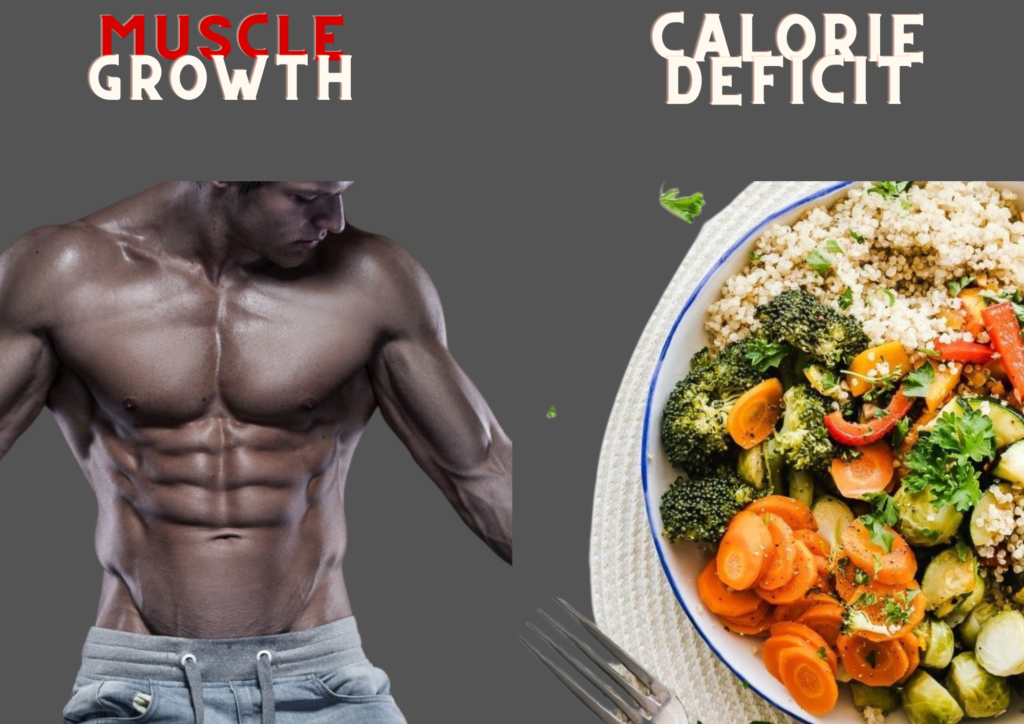Strategic Muscle Growth: Thriving in a Calorie Deficit

Understanding the Fundamentals
At the heart of this endeavor is the essence of what it means to be in a calorie deficit. A calorie deficit occurs when one consumes fewer calories than their body requires to maintain its current weight. While it’s a state widely associated with weight loss, creating the right conditions for muscle growth during this phase is the mark of thoughtful nutritional and training approaches.
The Role of Protein
Proteins are the building blocks of muscle, and their role in muscle preservation and growth during a calorie deficit cannot be understated. A heightened protein intake is paramount, particularly when the body is sourcing its energy from stores due to decreased caloric intake.
How Much Protein?
The American College of Sports Medicine recommends 1.2-2.0 grams of protein per kilogram of body weight for athletes. Erring towards the upper end of this spectrum can be advantageous in a deficit.
Weight Training: A Non-Negotiable
Consistent weight training sends a powerful signal to the body that muscle preservation is a priority. Progressive overload, which involves gradually increasing the weight, frequency, or number of reps in your workouts, becomes a cornerstone in this muscle-sparing effort.
Recovery: The Unsung Hero
In the absence of sufficient calories, recovery becomes even more critical. Quality sleep, restorative practices, and strategic supplement use form the triad of optimal recovery, allowing for tissue repair and growth despite caloric constraints.
The Science Behind Muscle Preservation
Muscle Hypertrophy vs. Atrophy
Muscle hypertrophy is the process through which muscle fibers grow and increase in size, while atrophy refers to the loss of muscle tissue. When in a calorie deficit, the game is one of balance: stimulating hypertrophy just enough to counteract any tendencies towards atrophy.
Hormonal Balances
The ebb and flow of hormones like testosterone, growth hormone, and insulin-like growth factors play roles in muscle metabolism. Your dietary choices and timing can help optimize these hormonal environments even in a calorie-deficient state.
Nutrient Timing and Its Impact
The timing of nutrient intake, particularly protein and carbohydrates, around workouts can facilitate a greater anabolic response, enabling muscle repair and growth even when total calories are low.
The Role of Cardio
Cardiovascular exercise can assist in creating a calorie deficit but must be balanced with the potential for muscle catabolism. Strategic cardio means being deliberate about the type, intensity, and duration of cardio to support fat loss while minimizing muscle loss.
Strategic Muscle Growth in Action: A Practical Guide
Prioritize your protein: Ensure each meal includes a protein source.
Balance your macro split: After protein needs are met, allocate the remainder of your calories to carbs and fats.
Don’t fear carbs: Use them strategically around workouts to fuel performance.
Fat is your friend: Essential for hormone regulation, include healthy fats daily.
Lift and lift heavy: Focus on compound movements for maximal hypertrophy stimulus.
Moderate your cardio: Consider low-impact, shorter sessions to minimize muscle loss.
Rest and digest: Emphasize recovery to enable muscle repair.
FAQs
Can you really gain muscle while having a calorie deficit?
Yes, particularly if you are new to strength training or returning after a break, but it’s more challenging and typically slower for experienced athletes.
How much of a calorie deficit is too much?
A moderate calorie deficit of about 20% below maintenance calories is often recommended to balance muscle growth and fat loss without significant muscle catabolism.
Should I do cardio if I want to gain muscle in a calorie deficit?
Yes, but it should be done judiciously. Low to moderate-intensity cardio can aid in fat loss while preserving muscle, especially when combined with a high-protein diet and resistance training.
Can supplements help me build muscle in a calorie deficit?
Certain supplements like BCAAs, whey protein, and creatine may help preserve muscle mass and even aid in growth during a calorie deficit, but they’re supplementary to diet and training, not replacements.
Does meal timing affect muscle growth in a calorie deficit?
While meal timing is not as crucial as overall nutrient intake, consuming protein and carbs pre- and post-workout can enhance muscle protein synthesis and support recovery.
What’s the best way to ensure I’m in a calorie deficit?
Tracking your food intake using apps or maintaining a food diary can be an effective way to ensure you’re in a calorie deficit. Pairing this with regular weigh-ins and body composition assessments can help monitor progress.
How long can I be in a calorie deficit while still gaining muscle?
The duration of a calorie deficit for muscle gain is highly individual and should be closely monitored. It’s essential to listen to your body and consider adjusting intake if performance declines or recovery becomes inadequate.
Mastering the intricate dance of building muscle in a calorie deficit is an exercise in patience, precision, and persistence. By employing a strategic approach to your eating habits, training routine, and recovery processes, muscle growth can indeed be achieved in tandem with fat loss, casting aside the conventional wisdom that these goals are mutually exclusive. Moving forward, armed with these strategies, you can sculpt a physique that is both lean and muscular, a testament to the smart synergy of diet and exercise.